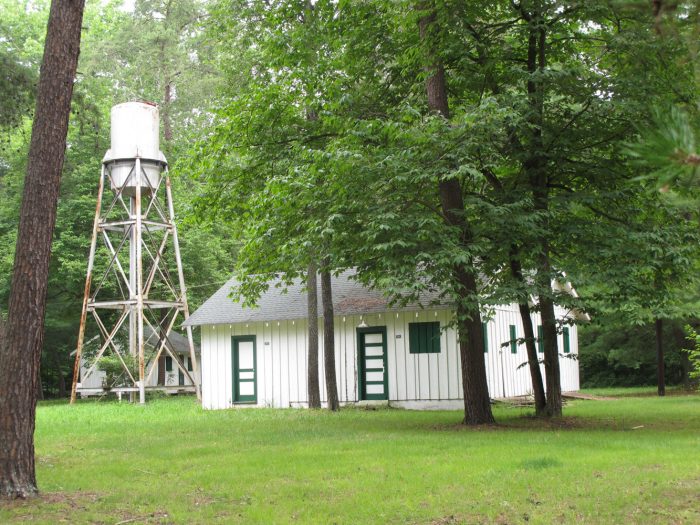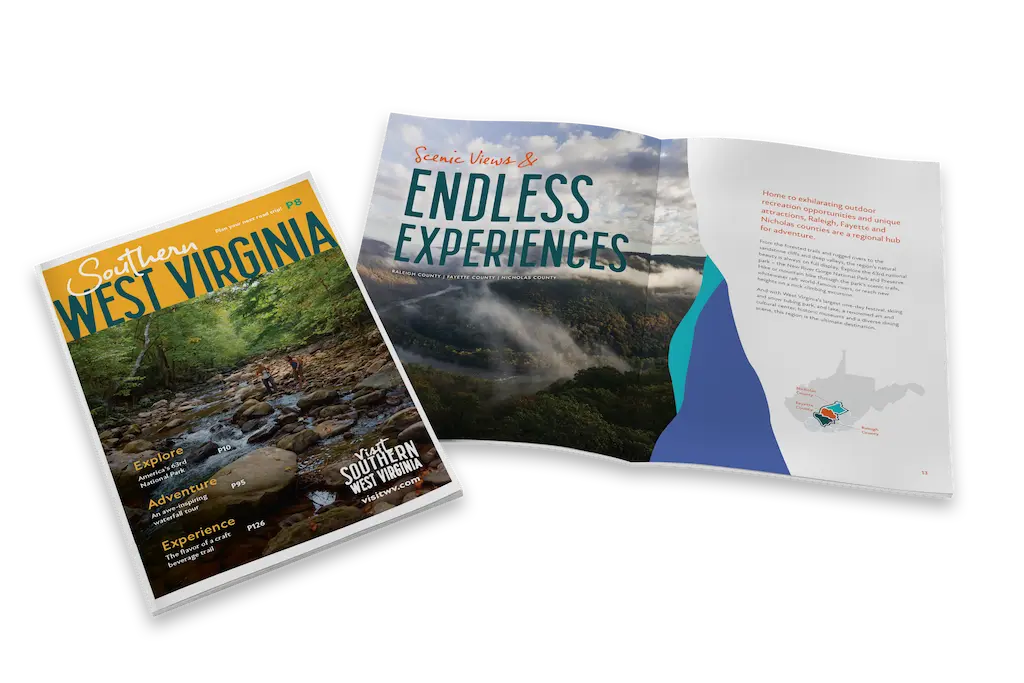What’s hidden deep in the New River Gorge?
April 17, 2022Forgotten monuments and historic buildings sit just off the beaten path.
Long Point, Nuttallburg, Sandstone Falls … it’s hard to resist another visit to places like these. But what about the remaining 70,000 acres in the New River Gorge? The next time you hike, consider going to parts (relatively) unknown; you might find a new favorite building, historic town, or structure!
Quinnimont
Today, the New River Gorge yields rich seams of adventure. Folks come from all over to grapple sandstone cliffs, surging rapids, and twisting trails. Others visit for contemplation and glorious scenery. You might say recreation is its natural resource.
Not so long ago, though, the Gorge had a different kind of industry: mining. So prosperous were the coal seams that boom towns existed every half mile.
Quinnimont is one such community. Starting in 1870, it had an iron furnace and railroad. Soon, coal mining became the town’s chief industry. Quinnimont eventually had a modest neighborhood, church, schools, and passenger trains.
What to see: A few gems exist in the town’s old section. The Buery Monument — a marble obelisk dedicated to the town’s founder — makes an exotic sight. It looks like something from an old-fashioned adventure novel.
You can also glimpse parts of the iron furnace. The massive stone foundations suggest what used to exist in the 19th century! There are a few older buildings as well, like churches and a jailhouse.
To get there, drive south on WV-61, then turn left onto WV-41 N for 5.7 miles.
Camp Brookside
This island getaway was originally a vacation spot for Electro Metallurgical Company employees and their families.
Camp Brookside first welcomed young campers in 1947. Back then, kids arrived by train from Alloy, where the divisional plant was located — a 2-hour trip. Summers passed in a breeze of campfires, exercises, animal identification, and reveille.
What to see: Little has changed over 70 years. The mess hall, cabins, and wash house, among others, still stand. For a real dose of nostalgia, you can even spend the night!
Park rangers have occasional activities, too, at the Camp Brookside Environmental Education Center. The research facility also has a library, field study tools, and wifi. It’s one of the region’s best places to study natural history and science.
Trump-Lilly Farm
More than 100 years ago, this historic Appalachian homestead crawled with activity. Cows, hogs, fowl, and sheep dotted the pastures, while fruit trees scented the air. A 28-year-old woman managed the entire property at one point. Now it’s a quiet refuge on National Park land.
What to see: Today, it’s a much quieter place. The white clapboard farmhouse still stands, as does its sandstone chimney and crooked granary. A picket fence bravely hems everything together, even as scraggly woods loom from surrounding hills. It’s a sight that makes you wonder if settlers ever felt intimidated by nature.
The Trump-Lilly homestead can be difficult to reach. Depending on weather, the unpaved road leading to the farm might be a challenge for cars without 4-wheel drive. Ask a ranger at the Sandstone Visitor Center for instructions and advice. Bring a camera, though, and make an effort — it’s a romantic experience, one that appeals to your imagination.
Camp Prince
This former military site boasts serene river views.
After WWII, the Army brought floating bridges to Prince. The flat banks and waterways were perfect for testing equipment and training soldiers. For a time, as many as 150 military personnel were stationed by the New River. It was a short-lived concept, though. By the early 1960s, Camp Prince (also known as Army Camp) permanently closed.
What to see: What attracted the military in 1950 lures visitors today: flat grassland and river access. You’re welcome to bring a tent and spend the night. A few Army remnants exist, too: a water tank, cement floors, and building foundations.
Camp Prince is off Route 41. If you’re driving from Beckley, take the first left after the New River.
100 Mile Challenge
While you’re exploring sites like these (and there’s plenty more out there!), log your mileage; there’s an extra-credit incentive for hikers like you.
The National Park Service’s 100 Mile Challenge encourages you to ford new trails. Those miles go faster if you have different places to explore, after all!
Simply download the mileage log and keep track of your progress. Even your dog can register. When you sign up for the challenge, though, write down Rover’s name and make it clear he’s a dog. That way, both of you are eligible for a prize. Once you’ve hiked 100 miles, bring your log to the Canyon Rim or Sandstone visitors’ centers for a commemorative token.
Which place have you always wanted to hike in Southern West Virginia?


